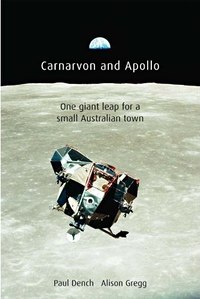Review: Carnarvon and Apolloby Jeff Foust
|
| Just as fascinating as the technical discussion is the effect the station had on the remote town. |
NASA had a presence in Australia since the beginning of its human spaceflight program, most notably the Mulchea tracking station near Perth. In preparation for the Gemini program, though, NASA sought a location farther north, where a station could track and communicate with the spacecraft on more ground passes. The agency eventually settled on the small town of Carnarvon, nearly 1,000 kilometers north of Perth. A state-of-the-art tracking station arose just outside of town and became a part of NASA’s network for the Gemini and, later, Apollo programs.
Paul Dench, the first engineer recruited to work at the station and who eventually became station manager, and Alison Gregg, a wife of one of the station’s technicians and a newspaper reporter, describe both the technical challenges and accomplishments of the station as well as the impact the station had on the small town. The station had a supporting role in missions from the beginning of Gemini through Skylab, which the authors describe in detail in the book, as well as the development of the communications and tracking infrastructure, no easy feat in a locale that in the early 1960s had limited telephone service and no television.
Just as fascinating as the technical discussion is the effect the station had on the town. An influx of well-educated people—primarily Australians as well as British emigrants—who came to Carnarvon to work at the station had a major impact on the sleepy town that had been best known for fishing and banana plantations. There was also plenty of culture shock, particularly for the Britons who moved halfway around the world into a very different environment. Over time, though, the “trackers”, as the station’s workers were known as, integrated themselves into the town and helped make their own contributions to local society.
However, in the early 1970s NASA decided to consolidate its tracking and communications facilities in Australia, and elected to close the Carnarvon station after the end of the Skylab missions. Today there is little left of the station and the role it played in the early Space Age. Carnarvon and Apollo goes into considerable depth about the station and its effect on the town; perhaps too much times for the casual reader who may not be interested in all the details presented in the book about the comings and goings of life in Carnarvon. The book, though, serves as a reminder of the effect the opening era of the Space Age had throughout the world, even in an isolated corner of Australia.
